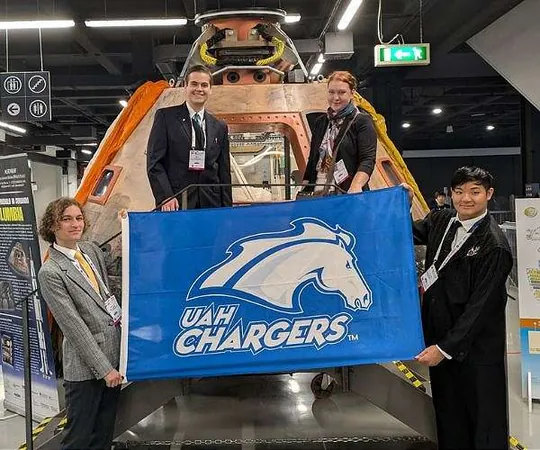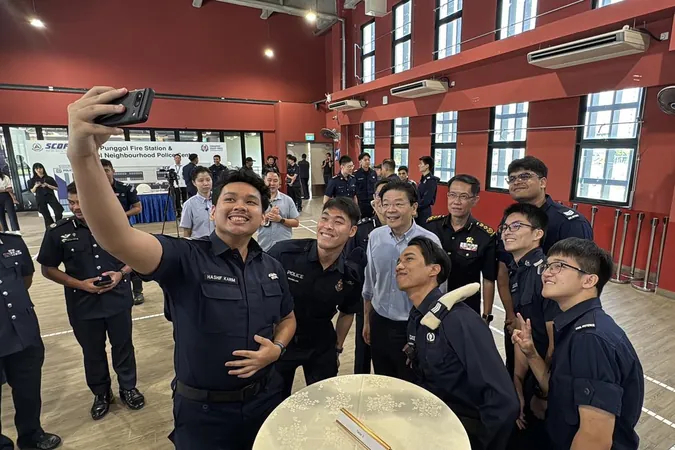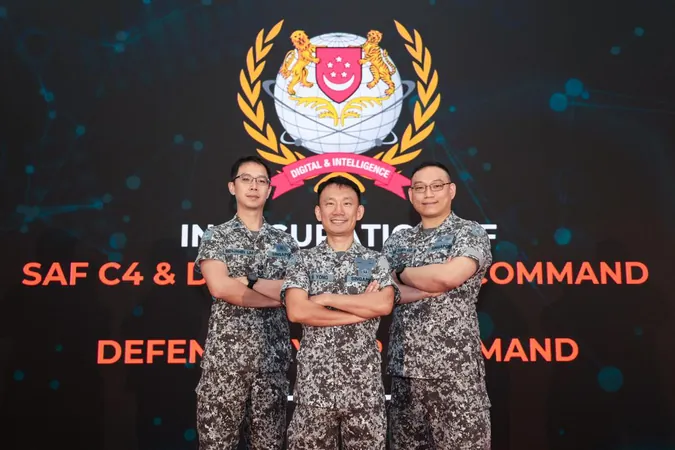
UAH Electric Propulsion Club Unveils Game-Changing Ion Thruster and Eyes Patent Protection!
2025-01-04
Author: Rajesh
Groundbreaking Ion Thruster at IAC
In an exciting advancement for space exploration, the University of Alabama in Huntsville’s Electric Propulsion Club (EPC) recently showcased their groundbreaking STARGATE, an innovative gridded ion thruster, at the prestigious 75th International Astronautical Congress (IAC) held in Milan, Italy. This student-led initiative, comprised entirely of undergraduates, marks a significant milestone in the evolution of electric propulsion technology.
Addressing the Need for Efficient Propulsion Systems
The surge in small satellite deployments in Earth’s orbit necessitates new, efficient propulsion systems. Electric propulsion (EP) has emerged as the solution, enabling capabilities such as autonomous station-keeping, collision avoidance, and precision orbital maneuvers—all imperative for the success of modern satellite missions.
UAH EPC Delegation and Collaboration
The IAC attracted over 11,000 participants from more than 120 countries, including top officials from 60 national space agencies, a platform that highlighted the crucial developments in the aerospace sector. Leading the UAH EPC delegation were Claude Blue, the research lead and president of the group; Noa Milivojevic, chief mechanical engineer; Dmitri Tsahelnik, and Ella Hazle, all passionate aerospace engineering students eager to pioneer the future of space travel.
Innovative Ion Thruster Design
STARGATE represents a novel approach to ion thruster design, leveraging corona discharge reactions for plasma production, a departure from the traditional hollow cathode or radio frequency technologies. "This proprietary technology is currently in the patent process with the UAH Office of Technology Commercialization (OTC)," stated Blue.
How Ion Thrusters Work
Ion thrusters operate by ionizing a neutral gas to produce positively charged ions, which are then accelerated through high-voltage electric fields created by grid electrodes, generating thrust. The unique corona discharge method utilized by the STARGATE thruster promises to enhance efficiency, making it particularly suitable for small satellites in low Earth and geostationary orbits.
Networking and Collaboration at IAC
At the IAC, networking opportunities flourished, with the team establishing valuable connections and potential collaborations to fuel their technological development further.
Faculty Support and Recognition
Guided by faculty advisor Dr. Themistoklis Chronis, the project gained visibility after EPC won the 2023 Von Braun Symposium Student Poster Contest, which led to sponsorship from the American Astronautical Society, allowing Blue to present their findings in Italy along with the entire team.
Community and Inspiration
The UAH EPC also received support from various leaders and organizations including Debora Nielson from the Alabama Space Grant Consortium, Dr. James Miller of the physics department, and other esteemed faculty members. "It’s incredibly inspiring to see the collective effort toward revolutionizing space travel," Blue remarked, reflecting on their experience at the conference.
Looking Ahead in Space Exploration
The IAC also introduced attendees to cutting-edge technologies like VAST Space’s HAVEN 2 concept and the AXIOM PRADA spacesuit, sparking new ideas for the EPC's future projects. As the landscape of space exploration continues to evolve, the UAH Electric Propulsion Club emerges at the forefront, ready to propel humanity into the next frontier!
Conclusion
Stay tuned as we follow STARGATE’s journey, from innovative concept to a crucial player in shaping the future of satellite propulsion!




 Brasil (PT)
Brasil (PT)
 Canada (EN)
Canada (EN)
 Chile (ES)
Chile (ES)
 Česko (CS)
Česko (CS)
 대한민국 (KO)
대한민국 (KO)
 España (ES)
España (ES)
 France (FR)
France (FR)
 Hong Kong (EN)
Hong Kong (EN)
 Italia (IT)
Italia (IT)
 日本 (JA)
日本 (JA)
 Magyarország (HU)
Magyarország (HU)
 Norge (NO)
Norge (NO)
 Polska (PL)
Polska (PL)
 Schweiz (DE)
Schweiz (DE)
 Singapore (EN)
Singapore (EN)
 Sverige (SV)
Sverige (SV)
 Suomi (FI)
Suomi (FI)
 Türkiye (TR)
Türkiye (TR)
 الإمارات العربية المتحدة (AR)
الإمارات العربية المتحدة (AR)